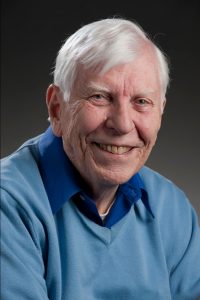Alvin Virgil Tollestrup (1924-2020) was a pioneer in the development of the physics program at Fermilab.
Alvin Virgil Tollestrup: A Life in Science — a coffee table book
We are pleased to announce the publication of a new book remembering the life of Alvin Tollestrup titled “Alvin Virgil Tollestrup (1924-2020): A Life in Science.” This 50-page coffee table book is being published. This book is available as a PDF version here: FERMILAB-BOOK-2021-01.
Contact us at tollestrupbook AT gmail.com (convert this to an email address) for more information.
A Life in Science

Alvin Virgil Tollestrup was born in Los Angeles, California. He received his bachelor’s degree in engineering from the University of Utah and then joined the U.S. Navy to help with the American effort in World War II. He entered graduate school at the California Institute of Technology, where he earned his Ph.D. in physics in 1950. His doctoral adviser was William A. Fowler, who shared the 1983 Nobel Prize in physics. Tollestrup then took a position at Caltech to build the electron synchrotron, a type of particle accelerator. At the time it was the highest-energy synchrotron in the world, starting at 500 million electronvolts, or MeV, finally reaching 1,300 MeV.
He joined the Caltech faculty as an assistant professor of physics in 1953. While on sabbatical at CERN, the European particle physics laboratory, from 1957-58, he helped plan and execute the first experiments on the lab’s 600-MeV cyclotron particle accelerator. The work led to the first observations of the electron decay mode of the pion (a subatomic particle consisting of up and down quarks and antiquarks). He became an associate professor at Caltech in 1958 and a full professor in 1962.
Tollestrup arrived at Fermilab in July 1975 on another sabbatical, intending to stay only six months. He ended up stretching the sabbatical to two years, during which time he worked on superconducting accelerator technology.
He joined the Fermilab staff following his sabbatical and in 1978 became head of the newly created Collider Detector Facility. He later became a founding member of the CDF collaboration, serving as its co-spokesperson from its inception in 1983 until 1992. He was instrumental in organizing the CDF collaboration, which initially consisted of 13 institutions and 87 physicists from the United States, Italy and Japan.

